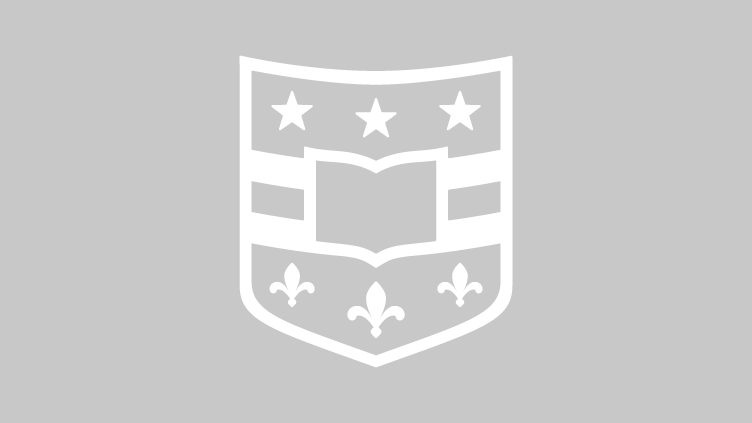New photo ID laws may impact key elections, hurt minority voter turnout
Election turnout among young people of color, including African Americans, Latinos and Native Americans, may drop by nearly 700,000 voters in states with new photo ID laws, a decline that could impact presidential contests in battleground states, a new study suggests.
Leo climbs the walls Oct. 5 and 6
F=Gm1m2/d2. Well. Of course it does. Newton’s Universal Law of Gravity is a pillar of physics, a monument of mathematics, a timeless, unchanging tribute to scientific reasoning. Tell it all to Leo, when his world goes suddenly, inexplicably topsy-turvy. On Oct. 5 and 6, Edison will present Leo, the newest creation from Berlin’s Circle of Eleven, as part of its fall Ovations Series.
Innovative imaging center awarded $7.1 million
The Molecular Imaging Center at Washington University
School of Medicine in St. Louis has received a five-year, $7.1 million
grant to develop innovative ways to study cancer and other disorders by
monitoring the activity of cells and proteins inside the body.
Kyle Erdos-Knapp presents Liederabend Sept. 16
Tenor Kyle Erdos-Knapp, whose recent performance as Tobias in Opera Theatre of St. Louis’ production of Sweeney Todd “nearly stole the evening” (KMOX), will return to St. Louis to present Franz Schubert’s beloved song cycle Die schöne Müllerin. The performance, which begins at 3 p.m. Sunday, Sept. 16, is the annual Liederabend sponsored by WUSTL’s departments of Music and Germanic Languages and Literatures, both in Arts & Sciences.
Ruby Bridges’ powerful story sets tone for Ervin Scholars Program’s 25th anniversary celebration
Six-year-old Ruby Bridges entered the history books when she entered first grade. As the youngest foot soldier in the battle to integrate public schools, she will have a powerful story to tell at the Ervin Scholars’ 25th anniversary keynote event at 4 p.m. Friday, Sept. 14, in Graham Chapel.
Sports update: Volleyball remains unbeaten with four wins at national invitational
The top-ranked volleyball team improved its record to
10-0 by winning four matches over top-25 opponents at the Washington
University/ASICS National Invitational this past weekend.
Design, innovate and disrupt are keys to new interdisciplinary courses
Two new interdisciplinary exective education courses bring together experts from across the Danforth Campus to explore emerging concepts that will impact the future of industries, economies and the environment. The two-day and three-day seminars will take place near the end of October.
U.S. immigration policy expert Tino Cuellar to give Constitution Day address
Veteran policy specialist and 2012 Washington University Distinguished Visiting Scholar Mariano-Florentino “Tino” Cuellar will present this year’s Constitution Day lecture on “Immigrants, Citizens and American Law.”
Large lung cancer study shows potential for more targeted therapies
A nationwide consortium of scientists has reported the first comprehensive genetic analysis of squamous cell carcinoma of the lung, a common type of lung cancer responsible for about 400,000 deaths each year. According to Ramaswamy Govindan, MD, of Washington University School of Medicine in St. Louis, about 75 percent of the tumors studied have mutations that can be targeted with existing drugs.
Vincent Varvel and Stella Markou launch DUC Chamber Music Series
Guitarist Vincent Varvel and soprano Stella Markou will launch the fall Danforth University Center Chamber Music Series at 7:30 p.m. Wednesday, Sept. 12. The performance will feature songs spanning four centuries, including works by Henry Purcell, George F. Handel, Enrique Granados, Heitor Villa-Lobos and George Gershwin. In addition, the program will highlight My Beloved Is Mine, a 2007 composition by WUSTL’s own Martin Kennedy, assistant professor of music.
View More Stories
